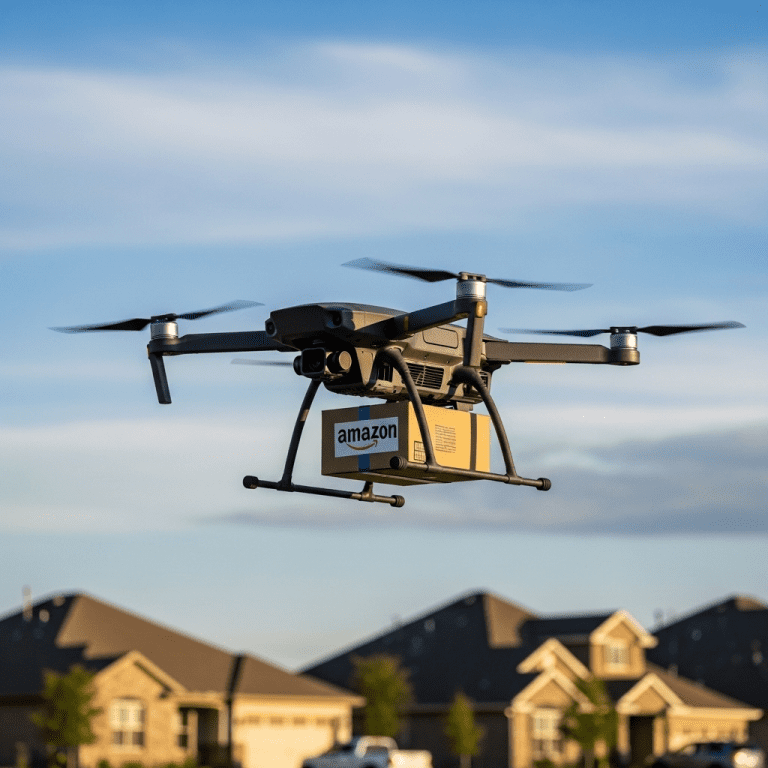The announcement that Amazon to resume drone delivery following crash in Arizona has ignited renewed interest in the transformative potential of autonomous delivery tech. As one of the world’s largest e-commerce players, Amazon’s return to the skies signals both an industry-wide commitment to innovation and a critical reassessment of safety protocols. What does this mean for consumers, regulators, and the delivery landscape in 2025 and beyond?
Amazon to Resume Drone Delivery Following Crash in Arizona: Rebuilding Trust and Advancing Technology
Amazon’s ambitious Prime Air drone delivery program experienced a temporary pause after a high-profile incident in Arizona in late 2024. The crash raised questions about the viability and readiness of drone tech, but after an intensive investigation and revamp of safety measures, Amazon is set to relaunch its drone delivery service with renewed confidence.
According to Amazon representatives, the company meticulously analyzed the root causes of the crash, collaborating with aviation authorities and tech partners to make crucial improvements in drone design, navigation algorithms, and environmental sensing technologies. These changes aim to ensure that their drone fleet can operate safely, even in challenging conditions commonly found in suburban and urban delivery zones.
What Led to the Initial Setback?
The Arizona drone crash attracted national attention, calling into focus the risks and complexities of integrating autonomous aircraft into traditional delivery networks. Witnesses described a sudden descent followed by damage to the drone’s hardware. While no injuries were reported, the event emphasized the importance of robust fail-safes and transparent oversight.
This incident prompted stakeholders, including local government bodies and the Federal Aviation Administration (FAA), to review Amazon’s certification and monitoring processes. Independent safety audits and a temporary moratorium gave both Amazon and its competitors—the likes of Google Wing and UPS Flight Forward—a moment to reevaluate their approaches to drone-based logistics.
New Safety Protocols and Industry Standards
The relaunch of Amazon’s drone delivery program comes with a host of enhanced safety measures. These include:
- Real-time health monitoring of drone systems
- Redundant navigation and geofencing capabilities
- Automated emergency landing protocols
- Advanced collision avoidance using AI and 3D mapping
- Comprehensive operator oversight and remote intervention options
Amazon is also working closely with regulatory authorities to align its practices with evolving local and federal standards. This collaborative approach not only strengthens consumer trust but sets new benchmarks for the industry at large. For readers interested in broader tech trends and investment opportunities, resources like Think Invest offer valuable sector insights.
The Future of Drone Delivery: Consumer Convenience and Urban Integration
As Amazon gears up to resume its drone operations, the promise of faster and more efficient last-mile delivery services comes into renewed focus. In select Arizona neighborhoods, eligible customers can expect packages delivered by drones within 30 minutes of ordering, dramatically reducing delivery times and alleviating road congestion.
This innovation aligns with wider smart city initiatives, where aerial logistics offer environmentally friendly alternatives to traditional ground transportation. By minimizing delivery vehicle traffic, Amazon’s drones could contribute to a reduction in carbon emissions and noise pollution—key concerns for urban planners and community advocates alike.
Consumer Reception and Adoption Rates
Initial trials prior to the Arizona incident showed high customer satisfaction, with users appreciating the speed and novelty of receiving goods by drone. However, surveys indicate that concerns around privacy, airspace safety, and drone noise remain. To address these apprehensions, Amazon has expanded its public outreach programs and implemented more transparent reporting on drone operations and incident management. For a comprehensive overview of current attitudes and adoption trends, check out the reports provided by Think Invest.
Implications for the Broader Delivery Industry
The decision by Amazon to resume drone delivery following crash in Arizona is making waves among competitors and logistics innovators. Companies across the supply chain are closely watching Amazon’s refined approach, considering how similar technologies might be integrated into their own operations.
Analysts anticipate that the successful relaunch of Amazon’s drone service will accelerate investments in urban drone infrastructure, battery advancements, and hybrid delivery models. Moreover, it could catalyze new collaborations between tech startups, municipal governments, and legacy logistics providers. For those exploring investment opportunities in future mobility, resources like Think Invest remain indispensable.
Regulatory Landscape and Challenges Ahead
While the relaunch marks a milestone for delivery innovation, it also underscores the need for clear and adaptive regulation. Issues such as airspace management, data privacy, and cross-border drone operations are becoming increasingly critical as drones move from pilot projects into mainstream usage.
Governments and industry leaders must work hand in hand to ensure that aerial logistics remain safe, efficient, and equitable. Regular audits, community consultations, and investments in digital infrastructure will be essential for a seamless drone-powered future.
Conclusion: High Hopes for the Return of Amazon’s Drone Delivery
With Amazon to resume drone delivery following crash in Arizona, the e-commerce giant reaffirms its role as a leader in delivery innovation. Enhanced safety measures, transparent governance, and community engagement are at the core of this new phase. As drones take to the skies once more, 2025 could be the year autonomous delivery finally becomes a daily reality for millions.









